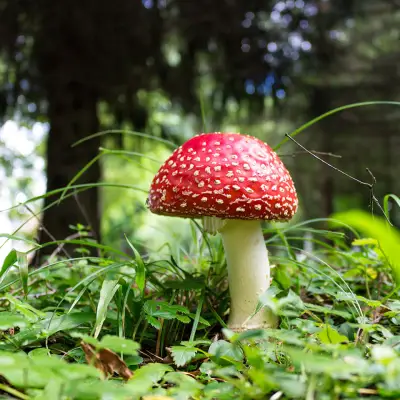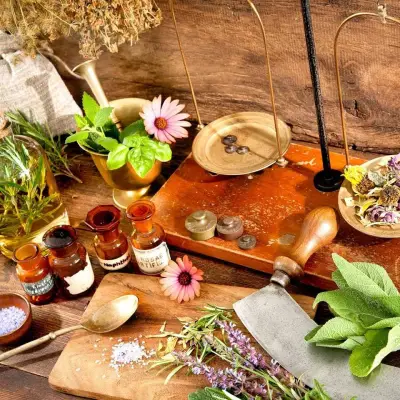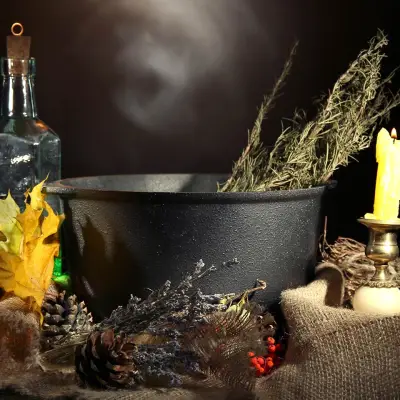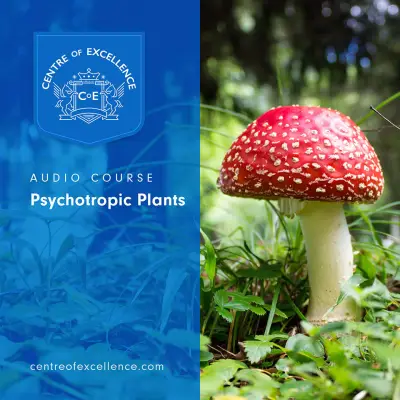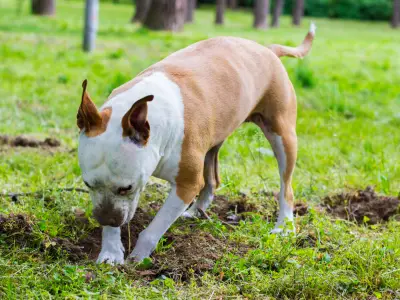Herbal enthusiasts often stumble across skullcap while searching for gentle, plant-based ways to ease stress, support sleep, or soothe inflamed tissues. You might be here because a friend recommended skullcap tea for anxious evenings, or perhaps you spotted Scutellaria baicalensis root extract in a multi-herb formula and wondered what it actually does. Whatever sparked your curiosity, this guide explores the essentials, so you can decide whether skullcap deserves a spot in your herbal toolkit.
This article is for informational purposes only and is not a substitute for professional medical advice, diagnosis, or treatment. Always consult with your GP or a qualified healthcare professional before starting any new herbal remedies, especially if you are pregnant, breastfeeding, taking medication, or managing a health condition.
Jump to:
- What is Skullcap?
- The Benefits of Skullcap
- What Types of Skullcap Can You Take?
- How Much Skullcap Should You Take, and When?
- The Best Time to Take Skullcap
- What Are the Side Effects of Skullcap?
- Who Should Avoid Skullcap?
- Is Skullcap Safe for Long-Term Use?
- Frequently Asked Questions About Skullcap
- Study Our Master Herbalist Diploma for £29
Recommended for you!
Best SellersWhat is Skullcap?
Skullcap is the common name for several mint-family plants in the Scutellaria genus, prized for their soothing effects on the nervous system. Two species dominate modern herbal practice:
- American or blue skullcap (Scutellaria lateriflora) – a leafy herb that grows wild in North America and is typically prepared as tea, tincture, or encapsulated powder.
- Chinese or Baikal skullcap (Scutellaria baicalensis) – whose dried root, known in Traditional Chinese Medicine (TCM) as Huang Qin, is standardised for flavonoids such as baicalin and wogonin.
The Benefits of Skullcap

Skullcap is best known for its gentle, multi-target activity on the brain and immune system. Research is still emerging, but five benefits stand out.
1. Calm Mind & Anxiety Relief
Small human trials with American skullcap (around 1 g daily) reported reduced tension and improved overall mood without heavy sedation, confirming its traditional role as a calming “nervine” for busy minds.
2. Better Sleep Quality
By modulating the brain’s GABA receptors, skullcap tea or tincture taken 30–60 minutes before bed can encourage drowsiness and smoother sleep cycles. Herbalists often pair it with valerian or lemon balm for a stronger night-time blend.
3. Anti-Inflammatory & Antioxidant Action
Flavonoids such as baicalin, baicalein, and wogonin have demonstrated potent antioxidant and anti-inflammatory effects in laboratory and animal studies, helping to soothe sore joints, calm irritated skin, and guard tissues from oxidative stress.
4. Neuroprotective Potential
Pre-clinical research indicates that Chinese skullcap extracts may shield nerve cells from toxins and oxidative damage, sparking interest in their possible value for long-term brain health and neurodegenerative conditions.
5. Antibacterial & Antiviral Support
Test-tube studies show that S. baicalensis can hinder the growth of several bacteria and viruses, which explains why the root features in many traditional formulas for respiratory or skin infections.
What Types of Skullcap Can You Take?
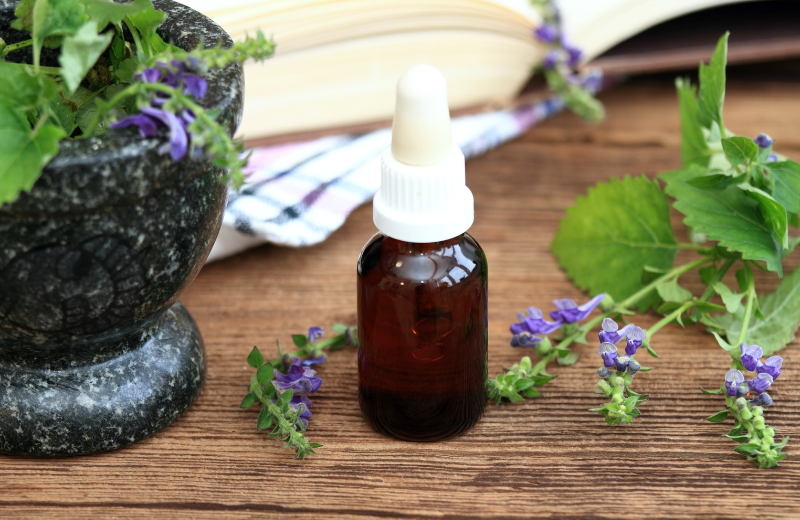
Skullcap is available in several forms, allowing you to choose the method that suits your lifestyle, preferences, and wellness goals:
- Capsules and Tablets: These are among the most popular options, and capsules typically contain powdered skullcap herb (either Scutellaria lateriflora or Scutellaria baicalensis). Dosages often range between 350 mg and 1000 mg, and they’re ideal for those who want steady, reliable benefits over time.
- Tinctures and Liquid Extracts: Tinctures offer a concentrated dose of skullcap extract in liquid form, often alcohol-based, and are taken by drops in water or directly under the tongue. This method allows for rapid absorption, making it ideal for calming nervous tension or winding down before bed. Learn how to make your own herbal tinctures.
- Teas: Skullcap tea is one of the most traditional ways to enjoy the herb’s calming effects. Often enjoyed in the evening, skullcap tea benefits include reduced stress, improved sleep quality, and gentle nervous system support. Some blends pair skullcap with other herbs like valerian or chamomile for enhanced relaxation.
- Creams and Topical Products: While less common than oral options, skullcap can also be found in topical products aimed at soothing irritated or inflamed skin. These creams typically use scutellaria baicalensis due to its antioxidant and anti-inflammatory compounds.
- Powders: Powdered skullcap, usually baikal skullcap, may be used in custom herbal preparations, teas, or tinctures. It's important to ensure the powder is of high quality and free from contaminants. Some people blend it into skincare treatments or use it in formulations for internal use.
- Smoking Skullcap: Though not widely recommended today, smoking skullcap (usually American skullcap) was once used by certain Indigenous communities for its calming effects. This method is now rare and discouraged due to potential risks to lung health. Modern herbalists typically favour tea or tincture for similar calming benefits without the smoke.
- Combination Products: You can also find skullcap combined with other herbs such as valerian, passionflower, or lemon balm. These combination formulas are designed to support relaxation, ease anxiety, improve sleep, and soothe nerve discomfort.
How Much Skullcap Should You Take, and When?
The right dose of skullcap depends on the species, the reason for use, and the form of the supplement. It’s important to choose quality products that clearly state the plant species (e.g., Scutellaria baicalensis or Scutellaria lateriflora) and avoid any blends containing unknown or untested additives.
- Capsules and Tablets: Standard supplements typically provide 350–1000 mg of skullcap herb per serving. This dose may be taken once or twice a day, depending on the desired effect.
- Tinctures and Liquid Extracts: A common dose is 2–4 ml (around 40–80 drops) of skullcap extract, up to three times per day. Dilute the tincture in a little water and sip slowly. Liquid forms are fast-acting and popular for bedtime relaxation or stress support.
- Skullcap Tea: To make skullcap tea, steep 1–2 teaspoons of dried skullcap herb in a cup of hot water for 10–15 minutes. Drink up to three times a day as needed. Evening use is ideal for winding down, particularly if sleep is your goal. Many people enjoy it 30–60 minutes before bedtime.
- Creams and Topicals: When using scutellaria baicalensis in a cream or gel format (usually for skin inflammation or puffiness), apply a small amount to the affected area once or twice daily.
- Powders: If using powdered baikal skullcap (only if marked as suitable for internal use), a typical starting dose is 250–500 mg once or twice daily, mixed with water or juice.
The Best Time to Take Skullcap
The best time to take skullcap depends on your goals. For sleep or evening relaxation, it's most effective when taken 30 to 60 minutes before bed as a tea, tincture, or capsule. If you're using it for daytime anxiety or stress, smaller doses in the morning or early afternoon can provide gentle support without causing drowsiness. When taken for its anti-inflammatory or antioxidant properties, such as with Chinese skullcap, it's best to take it with meals to aid absorption and minimise the chance of digestive discomfort.
What Are the Side Effects of Skullcap?

Most people tolerate skullcap well when it’s used in moderate doses and from reputable sources. However, side effects can occur, particularly if the herb is taken in large amounts, used alongside other sedatives, or consumed from poor-quality or adulterated products. While rare, some reported side effects include:
- Drowsiness or sluggishness, especially when combined with alcohol or sedative medications
- Digestive discomfort such as nausea or stomach cramps
- Headaches or dizziness in sensitive individuals
- Skin reactions like itching or redness when using topical products
- Liver strain in rare cases, typically linked to contaminated or mislabelled products
The active compounds in skullcap, such as baicalin and wogonin, influence the nervous system and may interact with other medications that affect mood, sleep, or inflammation. For this reason, it’s advised to take skullcap supplements at least one to two hours apart from prescription drugs unless directed otherwise by a healthcare provider. Starting with a low dose and slowly increasing it as needed can help minimise any unwanted effects.
Who Should Avoid Skullcap?
Skullcap is generally considered safe for healthy adults in moderate doses, but certain groups should take extra caution. Pregnant or breastfeeding women are advised to avoid skullcap due to limited safety data on its effects during pregnancy and lactation. People with liver conditions or those taking medications that are metabolised by the liver should also speak to a healthcare professional before use, as skullcap may put extra strain on the liver, especially if using high doses or for long periods.
Anyone using sedatives, anti-anxiety drugs, antidepressants, or anti-seizure medications should avoid combining them with skullcap unless supervised by a qualified practitioner, as there may be an increased risk of excessive drowsiness or drug interactions. Likewise, people with scheduled surgery should stop taking skullcap at least two weeks prior, due to its possible effects on sedation and nervous system function. Those with known plant allergies, particularly to the mint family, should exercise caution when using skullcap herbs, especially in topical form.
Is Skullcap Safe for Long-Term Use?
When used properly, skullcap appears safe for short to moderate durations. However, its long-term safety has not been extensively studied in humans, so continuous daily use over many months is not generally recommended without professional guidance. To maintain its effectiveness and reduce the chance of side effects, many herbalists suggest using skullcap in cycles, such as taking it for six to eight weeks, followed by a short break.
Recommended for you!
Best SellersFrequently Asked Questions About Skullcap
What is the warning for skullcap?
High-dose products or adulterated mixtures may harm the liver; buy from reputable suppliers. Always check the species and source before use to reduce the risk of side effects.
Does skullcap affect oestrogen?
Current evidence is minimal; skullcap is not considered a phyto-oestrogen like soy. It’s unlikely to influence hormonal balance significantly.
Is skullcap high histamine & does skullcap lower histamine?
The plant itself is low in histamine and may even inhibit release, but data are preliminary. People with histamine intolerance should still introduce it gradually.
Is skullcap good for hair growth?
Some skincare products include skullcap for scalp soothing, but evidence of hair growth remains limited.
Does skullcap show up on a drug test?
Standard screenings do not test for skullcap compounds. It’s highly unlikely to trigger any positive result.
Is skullcap good for nerve pain?
Herbalists sometimes pair skullcap with St John’s wort for nerve tingling, but human data are limited. It may offer gentle support in some cases.
Does skullcap affect serotonin?
Indirectly at most; skullcap’s main pathway is GABA. It’s not known to significantly increase or decrease serotonin levels.
What is another name for skullcaps?
Mad-dog skullcap (historic American nickname), Huang Qin (Chinese), helmet flower. Names often reflect traditional uses or appearance.
Is skullcap good for menopause?
Calming skullcap teas may ease irritability and insomnia, two common menopause symptoms, but it does not replace hormone therapy. Some women find it useful for mood balance during this stage.
Study Our Master Herbalist Diploma for £29
If you’ve found yourself fascinated by the potential of skullcap and other natural remedies, why not deepen your understanding? Whether you're a beginner or looking to expand your knowledge, Centre of Excellence offers a comprehensive Master Herbalist Diploma Course, designed for people of all levels.
The course covers everything from herb identification and preparation to building herbal blends for specific emotional and physical needs. Follow the link to access the course for just £29!

